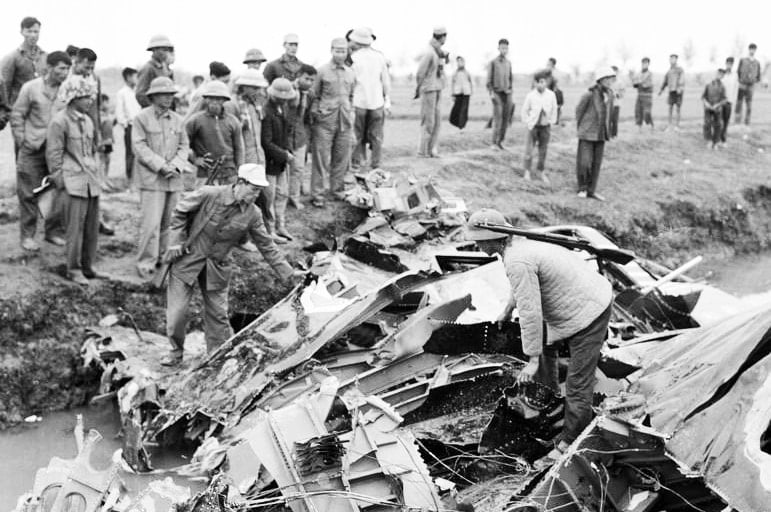
Production and fighting at the same time
After the Geneva Agreement of 1954, the North was completely liberated and moved forward to build socialism, while the South continued the people's national democratic revolution. While the people of the North focused on building socialism and building a large rear base to support the front line in the South, in 1965, the US imperialists launched a "local war" strategy in the South and a destructive war against the North. Many factories, enterprises, schools, and hospitals, the results of Hanoi's early years of building socialism, were destroyed.
In that condition, the army and people of Hanoi quickly changed direction to “both produce and fight”, both fight against the destructive war and support the southern front. Hanoi successfully launched the movements “Saturday to promote the struggle for national reunification”, “Each person works as hard as two for the beloved southern region” among the people, thereby maximizing the strength of the capital, creating material wealth to build socialism and support the battlefield.
During the period of fighting against the destructive war, Hanoi built up the militia and self-defense forces at 688 locations, ranging in size from platoons to battalions. 6 units were awarded the title of Hero of the People's Armed Forces, 384 units achieved the title of Determined to Win; organized 92 combat positions with anti-aircraft machine guns, 4 100mm cannons; 1,122 "plowman and gunman" and "hammerman and gunman" teams equipped with rifles; 414 observation posts, 36 observation posts, 95 telephone information bases; 157 militia and self-defense units coordinated combat with 123 anti-aircraft artillery positions [1].
In particular, in 1972, in just 30 hours, Hanoi evacuated over 240,000 elderly people and children from the city, organized a dense, multi-layered, multi-directional fighting force, completely defeated the strategic air raid of the US imperialists, creating the victory of "Hanoi - Dien Bien Phu in the air". Along with that, the people of Hanoi launched emulation movements such as "three readiness" for youth, "three responsibilities" for women, "steady hand with hammer, steady hand with gun" for workers, "steady hand with gun, steady hand with plow" for farmers, etc., contributing to building and firmly protecting the rear [2].
For veteran Dang Minh Thanh, a former student of Hanoi University of Science and Technology, the memories of the years of fighting for national independence and freedom, even though 50 years have passed, are still vivid in his mind because he was a member of the movement of "putting down the pen and going to war" of Hanoi students at that time. Veteran Dang Minh Thanh recalled: "When the resistance war against the US entered a tense phase, the need to support the southern battlefield became urgent, implementing the general mobilization order, localities simultaneously called on young people to join the army. Responding to the movement, I was one of more than 500 new recruits who were students of Hanoi University of Science and Technology to join the army, assigned to the 320th Infantry Division, participating in the battles in Southern Laos, the Central Highlands, and fighting down to Saigon to liberate the South until April 30, 1975".
Despite suffering the severe consequences of the destructive war, by 1975, Hanoi had built 232 state-owned enterprises and 411 handicraft cooperatives. The socio -economic indicators were all higher than in 1960: National income was 2.4 times higher; total industrial output value was 3.5 times higher; agricultural output value was 1.4 times higher; food output in paddy equivalent was 1.2 times higher; total pig herd was 2.3 times higher; total retail sales of goods were 3.2 times higher. The commercial network expanded rapidly to serve daily life and production during the war.
From 1965 to 1975, Hanoi completed and put into use 320 production works, 58 welfare works, 36 cultural and educational works. Traffic was ensured to be smooth in all situations. During this period, Hanoi also built dozens of bridges for motor vehicles, added 620km of graded roads and 1,850km of inter-village and inter-commune roads. In 10 years (1965-1975), Hanoi transported 26.7 million tons of goods, 652 million passengers; built and put into use 13 hospitals, 96 infirmaries, 4 district maternity homes, added 3,447 hospital beds and 2,357 medical staff.
Hanoi's achievements in building and protecting the rear not only helped the city stand firm against the smoke of bombs and bullets, but also served as a great source of encouragement for the people of the South. In particular, Hanoi's victory in the "Dien Bien Phu in the air" battle at the end of 1972 forced the US imperialists to sit at the negotiating table and sign the Paris Agreement in 1973 on ending the war and restoring peace in Vietnam, creating a solid foundation for the Southern revolution to gradually gain victory, moving forward to achieve complete victory in the Great Spring Victory of 1975.
"The army is not missing a single man"
Along with building and protecting the rear, in 10 years (1965-1975), Hanoi conducted a total of 29 military recruitment campaigns, mobilizing 86,061 young men and reserve soldiers, supplementing the military branches and directly supporting the battlefields. Compared to the assigned target, it reached 102.7% and compared to the city's population, it reached 7.04%. The mobilization rate compared to the population, working age and the mobilization distribution in each area were appropriate, ensuring that "not a pound of rice was missing, not a soldier was missing" [3].
It should be emphasized that the quality of the Hanoi army mobilized for the battlefield was high. In 10 years (1965-1975), Hanoi mobilized 5,107 party members, 36,425 union members, 31,396 militiamen, 4,296 reserve soldiers, 362 engineers, 537 intermediate technicians, 3,354 workers of all kinds, 657 reserve officers, 465 cadres from platoon to regiment level and a number of civil officials... to supplement the units [4].
Hanoi's military mobilization work was successfully completed, ensuring four requirements of quantity, quality, time and policy, contributing to the building of a modern technical army. In particular, during the years of large-scale mobilization (1965, 1968, 1972, 1975), Hanoi successfully completed its tasks. The vast majority of Hanoi youth who went to fight successfully completed their tasks. Among them, 8 comrades were awarded the title of Hero of the Armed Forces, 1,781 comrades were awarded the title of Brave Soldier, 2,663 comrades were awarded the title of Victory Soldier, Emulation Soldier, 15,846 medals, 9,281 medals, 35,930 diplomas and certificates of merit. There were 11,561 outstanding children of the Capital who heroically sacrificed their lives on the battlefield in the South; More than 700 families out of tens of thousands of martyrs' families have from 2 to 5 children who are martyrs; along with nearly 7,000 wounded soldiers who did not spare their blood and bones for the war to liberate the South [5].
They represent a generation of heroic Vietnamese youth during the anti-American war. The bravery and sacrifice of the soldiers of the past are still a strong source of inspiration, urging today's young generation to live with ambition and ideals, always wishing to contribute their strength and talent to preserve peace as well as promote the development of the capital and the country.
(To be continued)
----------
[1] Le Dinh Sy (editor-in-chief), Thang Long - Hanoi, glorious pages of history against foreign invaders, Hanoi Publishing House, 2010, p.568.
[2] Le Dinh Sy (editor-in-chief), Thang Long - Hanoi, glorious pages of history against foreign invaders, Hanoi Publishing House, 2010, p.568.
[3] Hanoi Party Committee, Records of the Standing Conference of the Party Committee to discuss the organization of the summary of the military recruitment work in 10 years of fighting against the US to save the country, meeting on September 17, 1977, Records No. 34, term VII from June 3, 1977 - February 10, 1980.
[4] Hanoi Party Committee, Records of the Standing Conference of the Party Committee to discuss the organization of the summary of the military recruitment work in 10 years of fighting against the US to save the country, meeting on September 17, 1977, Records No. 34, Session VII from June 3, 1977 - February 10, 1980.
[5] Hanoi Party Committee, Records of the Standing Conference of the Party Committee to discuss the organization of the summary of the military recruitment work in 10 years of fighting against the US to save the country, meeting on September 17, 1977, Records No. 34, Session VII from June 3, 1977 - February 10, 1980.
Source: https://hanoimoi.vn/ky-niem-50-nam-ngay-giai-phong-mien-nam-thong-nhat-dat-nuoc-30-4-1975-30-4-2025-thu-do-ha-noi-hau-phuong-lon-tron-nghia-ven-tinh-bai-2-bao-ve-tot-hau-phuong-699532.html




![[Photo] Many young people patiently lined up under the hot sun to receive a special supplement from Nhan Dan Newspaper.](https://vphoto.vietnam.vn/thumb/1200x675/vietnam/resource/IMAGE/2025/5/18/6f19d322f9364f0ebb6fbfe9377842d3)
![[Photo] Party and State leaders attend the special art program "You are Ho Chi Minh"](https://vphoto.vietnam.vn/thumb/1200x675/vietnam/resource/IMAGE/2025/5/18/6895913f94fd4c51aa4564ab14c3f250)
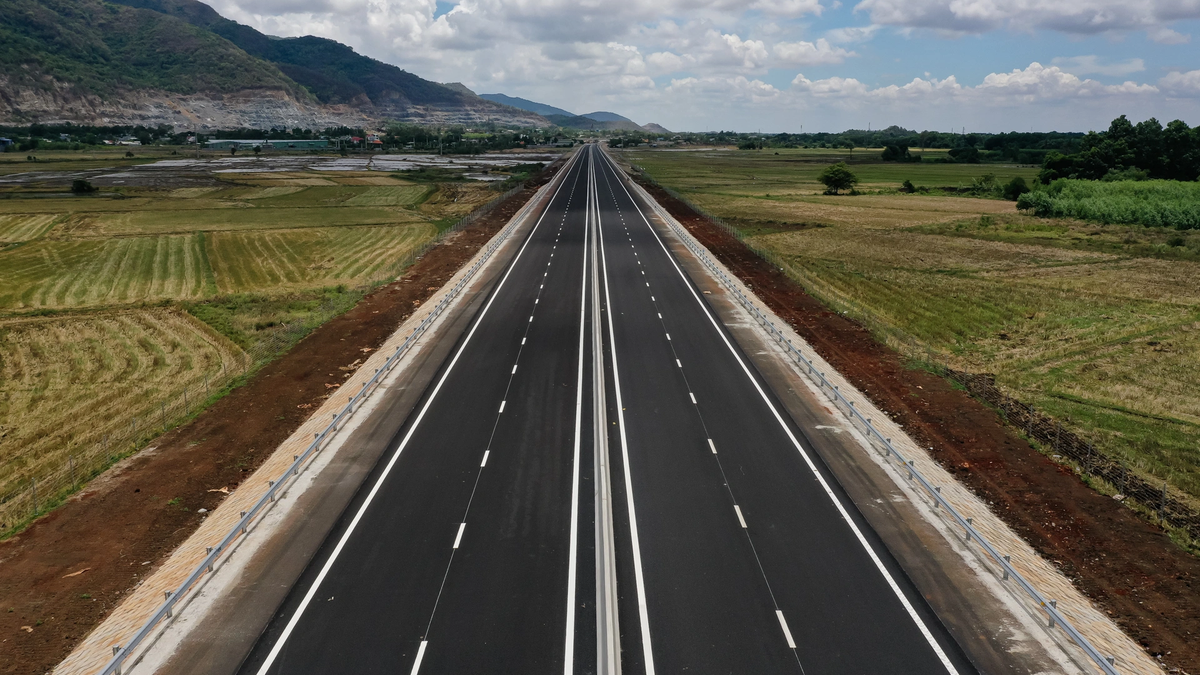
![[Photo] Ready for the top competitions of Vietnamese table tennis](https://vphoto.vietnam.vn/thumb/1200x675/vietnam/resource/IMAGE/2025/5/18/9c547c497c5a4ade8f98c8e7d44f5a41)


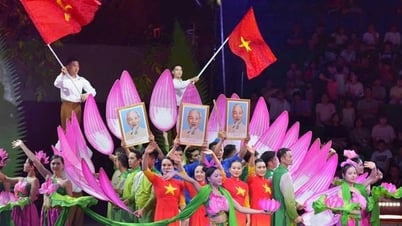
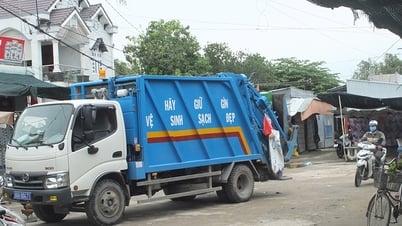
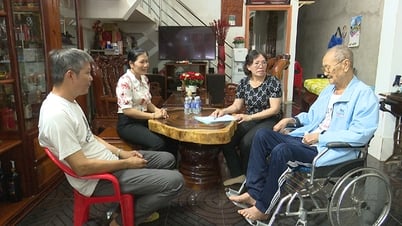
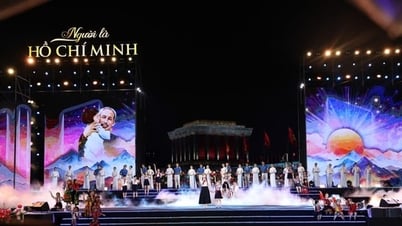







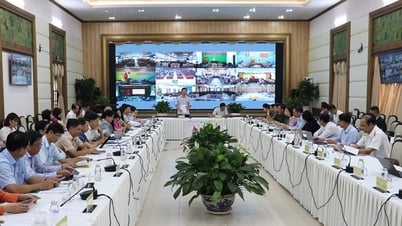

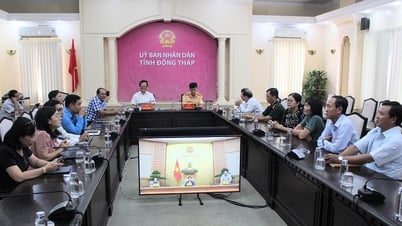
































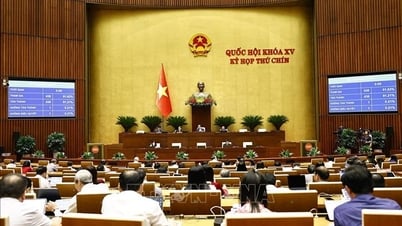
















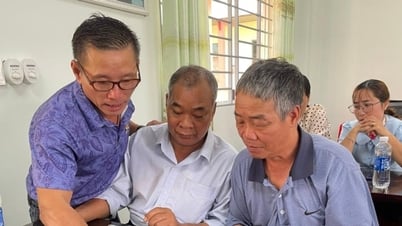

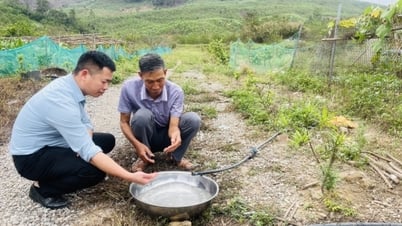

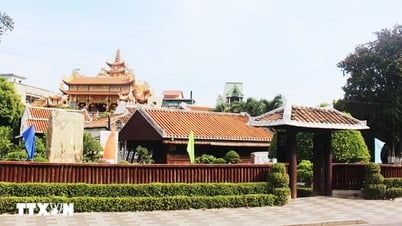

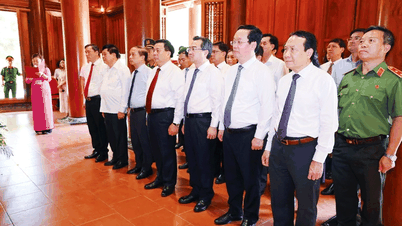








Comment (0)